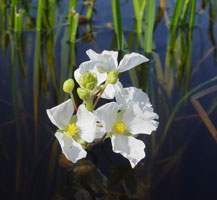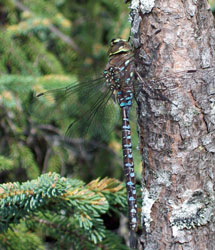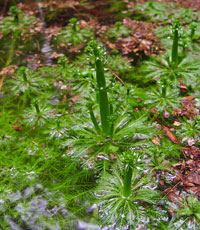DACF Home → Bureaus & Programs → Maine Natural Areas Program → About MNAP → Publications → Aquatic Biodiversity in Maine
Aquatic Biodiversity in Maine
2008 Maine Aquatic Biodiversity General Report (Executive Summary) - 5 MB pdf
(Download a free copy of Adobe Acrobat Reader)
About the Maine Aquatic Biodiversity Project



In 2000, The Nature Conservancy and the Maine Departments of Environmental Protection and Inland Fisheries and Wildlife initiated the Maine Aquatic Biodiversity Project to evaluate the current knowledge of Maine's freshwater plants and animals. The Maine Outdoor Heritage Fund and the Atlantic Salmon Commission provided additional funding. The Maine Natural Areas Program, U.S. Geological Survey, Maine Cooperative Fish and Wildlife Research Unit, University of Maine, Natural Resources Council of Maine, and Sportsmen's Alliance of Maine also served on the project's Science Steering Committee.
This project is the first to pull together what we know about Maine's freshwater biodiversity. Using previously published information as well as data from ongoing or recently completed monitoring and survey programs, the project sought to answer the following questions:
- What plants and animals live in Maine's lakes and streams?
- Are there any patterns to where certain plants or animals are found?
- What aquatic species can be found together?
- How has biodiversity changed over time?
And, perhaps most significantly,
- What are the threats to Maine's aquatic biodiversity?
- How can Maine ensure a diverse freshwater legacy for future generations?
The Maine Aquatic Biodiversity Project focused on lakes and streams, on aquatic vascular plants, insects and other invertebrates, fish, amphibians, and reptiles. While Maine's 600 square miles of wetlands and 116 square miles of estuary are integral to the functioning of many freshwater ecosystems and species, they are not included in this assessment. Information on the biodiversity of wetlands is included in Biological Diversity in Maine: An Assessment of Status and Trends in the Terrestrial and Freshwater Landscape (this is available on our publications page). Mammals and birds associated with freshwater systems were not covered, nor were microorganisms such as plankton.
The 2008 Maine Aquatic Biodiversity General Report (Executive Summary) - 5 MB pdf provides an executive summary of information contained in the project's comprehensive technical report. Included are an introduction to the landscape, an overview of current knowledge, threats to freshwater biodiversity, and recommendations for conservation of these resources.
For more detailed information, please see the comprehensive technical report, Freshwater Biodiversity in Maine (2008). Additionally, access to a selection of data sets and maps of species distributions, as well as a copy of this publication, are available online at Maine Outdoors - Maine Lakes.